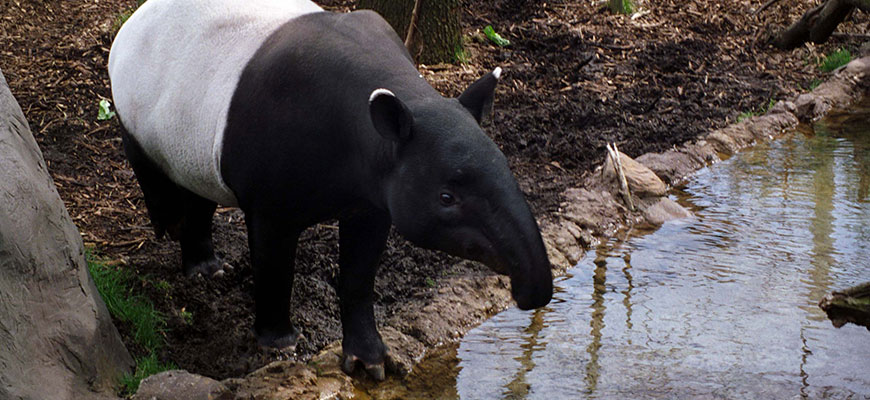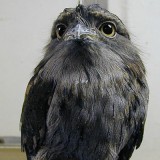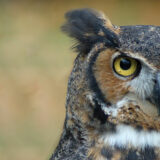RANGE
Burma and Thailand south to Malaya and Sumatra.
HABITAT
Dense primary rain forest or nearly any wooded or grassy area where there is a permanent supply of water.
SIZE
The largest of the four species of tapirs.
Head and body length: 7 to 8 feet
Shoulder height: 3 – 3.5 feet
Tail: 2 – 4 inches
Weight: 550 – 650 pounds
REPRODUCTION
Breeding is usaully March – June. Females have a gestation period of 390–395 days. A mating pair may stay together for several weeks, then separate. The females raise the young. They can reproduce about every 18 months. The single calf (twins are very rare) is dark reddish brown with yellow and white stripes and spots. At about 2 months of age, the pattern starts to gradually fade. By 6 months of age, the calf has its adult coloration. It will stay with its mother at least 6 to 8 months at which time it is nearly adult size. It will reach full growth and sexual maturity in 3 – 4 years.
DIET
Wild: Aquatic vegetation and leaves, buds, twigs, and fruits of low growing terrestrial plants, especially green shoots. Tapirs usually walk with their noses near the ground, browsing.
Zoo: High fiber grain twice a day, timothy hay always available. Any type of produce such as carrots, apples, bananas, sweet potatoes.
BEHAVIOR
Malayan tapirs are nocturnal. They are solitary except when females have young. Two tapirs meeting in the wild may act aggressively toward each other. They communicate during the mating season with shrill whistling sounds. When disturbed, they grunt in a pig-like fashion. They are inoffensive, shy and retiring. They cannot tolerate disturbance and do not adapt readily to environmental changes. When frightened they may seek refuge in the water. They can stay submerged for several minutes. They are excellent swimmers and spend much of their time in the water feeding, cooling off, or ridding themselves of parasites. It is said that the Malayan tapir will walk on the bottom of a river like a hippopotamus. When feeding, they tend to follow a zigzag course and take only a few leaves from each plant, roaming over a wide area.
POINTS OF INTEREST
The Malayan tapirs have very thick skin with short, bristly hair. They have a readily distinguishable color pattern. The front half of its body and its hind legs are black, the rear half above the legs is white. They camouflage in the forest at night with deep shadows and moonlight. They are rounded in the back and tapered toward the front. They are well suited for rapid movement through thick underbrush. They are very agile. They can run, slide, wade, dive, swim and climb hills with ease.
Tapirs have an acute sense of smell, excellent hearing and poor eyesight. Their eyes are small on the sides of the head and inset to protect them from thick foliage. Their ears are oval, erect, and not very mobile. They are often tipped with white hair. The snout and upper lip project into a short fleshy trunk with nostrils at the end. It is very sensitive and flexible and is used like a finger to pull leaves and shoots within reach of the mouth. Their hoofed feet have calloused pads to help absorb weight. Their forefeet have three main toes and a smaller one (the fourth), which is functional only on soft ground. Their hind feet have three toes. Their legs are short and slender. Their tail is short and thick. The tapir may resemble a pig, but is more closely related to the horse and the rhinoceros.
STATUS
Endangered and listed in CITES Appendix I mainly due to habitat loss. Forests are being cleared for agriculture and cattle grazing. They are also hunted for food, sport, and their thick skins, which provide quality leather. The tiger is their main predator. Their best hope for survival are forest reserves such as Taman Negara and other protected areas.
BIBLIOGRAPHY
Walker’s Mammals of the World, Fifth edition, Vol. 2, by Ronald Nowak, Johns Hopkins University Press, Baltimore, London. 1991. Pp. 1319-1322.
The Encyclopedia of Mammals, edited by Dr. David W. McDonald, Facts on File Inc. New York City. 1985. Pp. 480-481 and 488-489.
World Guide to Mammals, by Nicole Duplaix and Noel Simon. Greenwich House, a division of Arlington House, Inc. 1983, p. 214.
Wildlife Fact File – Card #207, 1992.
Additional information supplied by Louisville Zoo keeper Joanne Jansing.





